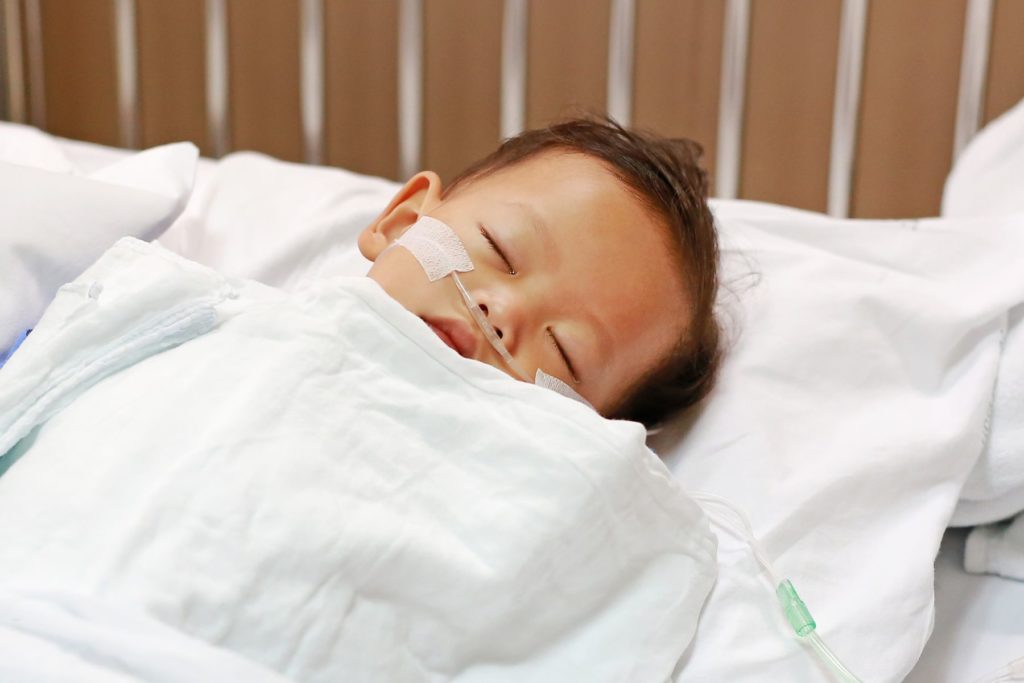RSV: What You Need to Know

Babies and children sick with respiratory syncytial virus (RSV) are filling pediatricians’ offices and children’s hospitals across the United States. This is an early surge as RSV “season” usually starts in late fall.
For most older children and adults infected with RSV, they will experience cold-like symptoms and feel better within a week or so. But for babies, younger children and older adults, RSV can be much more than a typical cold.
Bronchiolitis
RSV, among other viruses, causes an infection known as bronchiolitis. Bronchiolitis is a nasty illness in which the small airways in the lungs, called bronchioles, become inflamed. The inflammation can block the airways, making it hard to breathe. In addition to inflammation, the infection causes large amounts of mucous and secretions which can also block the airway. For babies who have small airways, this creates a real problem.
Bronchiolitis starts with cold symptoms: runny nose, fever and cough. About two to three days into the infection parents may notice their child breathing faster, using more energy to breathe, wheezing and even vomiting. Some babies feed poorly and can develop dehydration due to severe nasal congestion. In some cases, babies may present with apnea, which is when they stop breathing all together, even without any other sign of illness.
Risk Factors
Babies who were born prematurely are at particularly high risk for complications from RSV in the first year of life. This means they are more likely to develop severe lower respiratory tract disease requiring hospitalization. Also, children with congenital heart disease, chronic lung disease and immune deficiencies can develop more severe infection. Keep in mind that most children who require hospitalization for RSV are full-term healthy infants. The bottom line is that all parents of young infants need to be aware of RSV.
Treatment
The most important step is clear mucous from the nose so babies can breathe and eat. When babies don’t feed well, they can become dehydrated and require IV fluids. In addition, when babies develop mucous build up in their lungs, the oxygen level can decrease, requiring supplemental oxygen. Some babies may develop a secondary bacterial pneumonia or ear infection, both of which require antibiotics.
Prevention
Parents have the power to help prevent the spread of RSV:
- Cover coughs and sneezes with a tissue (you can also cough or sneeze into your elbow)
- Wash hands often with soap and water for at least 20 seconds after using the bathroom, eating and being outside
- Clean frequently touched surfaces such as doorknobs and mobile devices; use hand sanitizer regularly
- Stay home when you or your child is feeling sick – no school, no day care!
There is a medication called SYNAGIS (palivizumab) that contains man-made, disease-fighting proteins called antibodies. This medication is used to help prevent RSV disease, not treat children who already have RSV and is recommended by the American Academy of Pediatrics for children:
- born prematurely (at or before 35 weeks) and who are 6 months of age or less at the beginning of RSV season
- who have a chronic lung condition, called bronchopulmonary dysplasia (BPD), that needed medical treatment within the last 6 months, and who are 24 months of age or less at the beginning of RSV season
- born with certain types of heart disease and who are 24 months of age or less at the beginning of RSV season

